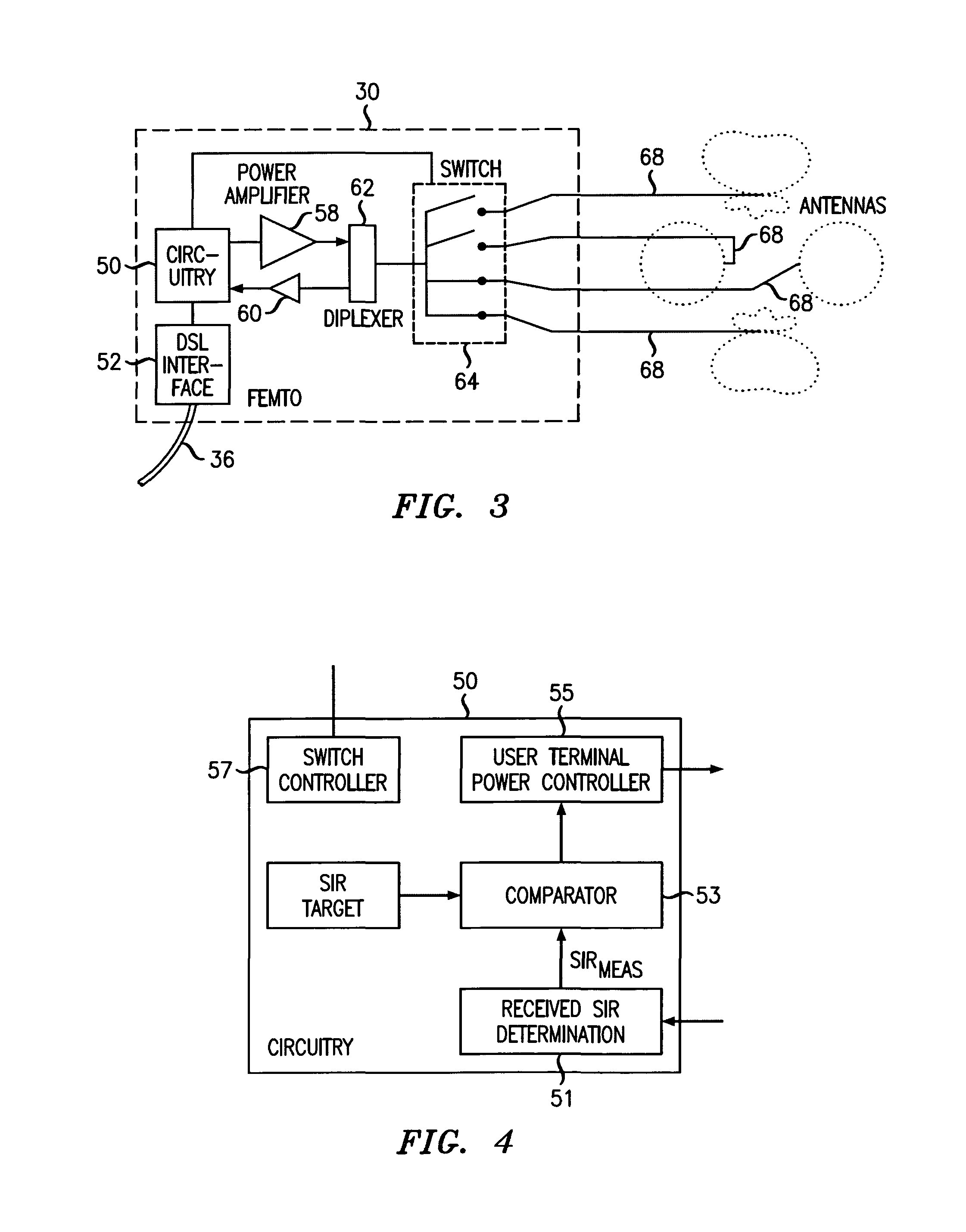Small cell base station comprising multiple antennas, and a method of controlling reception pattern by selecting a subset of the antennas for use
a small cell base station and antenna technology, applied in the field of wireless telecommunications, can solve the problems of radio interference, low transmit power in both uplink and downlink directions, and interference to macrocells by femto users, so as to reduce uplink interference to signals from the small cell-connected user terminal, reduce transmit power, and prolong battery life
- Summary
- Abstract
- Description
- Claims
- Application Information
AI Technical Summary
Benefits of technology
Problems solved by technology
Method used
Image
Examples
Embodiment Construction
[0026]The inventors realised that implementing classic beam forming, namely the use of multiple antenna elements with particular amplitudes and phase shifts is not feasible in femtos.
[0027]The inventors realised that use of a multi-element switchable antenna is useful for interference mitigation. This is where a number of antennas are provided and a switch is used to select which antenna or combination of antennas to use. The inventors realised that the computational complexity of this approach is generally low, but as it depends on the number of antennas being used, use of more than two antennas at a time is usually avoided.
[0028]The inventors realised that to make effective use of this approach, interference must be managed by addressing how to dynamically select an antenna pattern giving a good signal, from the user terminal of interest, with little interference.
[0029]We now describe example embodiments of the invention starting with a description of the network before describing...
PUM
 Login to View More
Login to View More Abstract
Description
Claims
Application Information
 Login to View More
Login to View More - R&D
- Intellectual Property
- Life Sciences
- Materials
- Tech Scout
- Unparalleled Data Quality
- Higher Quality Content
- 60% Fewer Hallucinations
Browse by: Latest US Patents, China's latest patents, Technical Efficacy Thesaurus, Application Domain, Technology Topic, Popular Technical Reports.
© 2025 PatSnap. All rights reserved.Legal|Privacy policy|Modern Slavery Act Transparency Statement|Sitemap|About US| Contact US: help@patsnap.com



